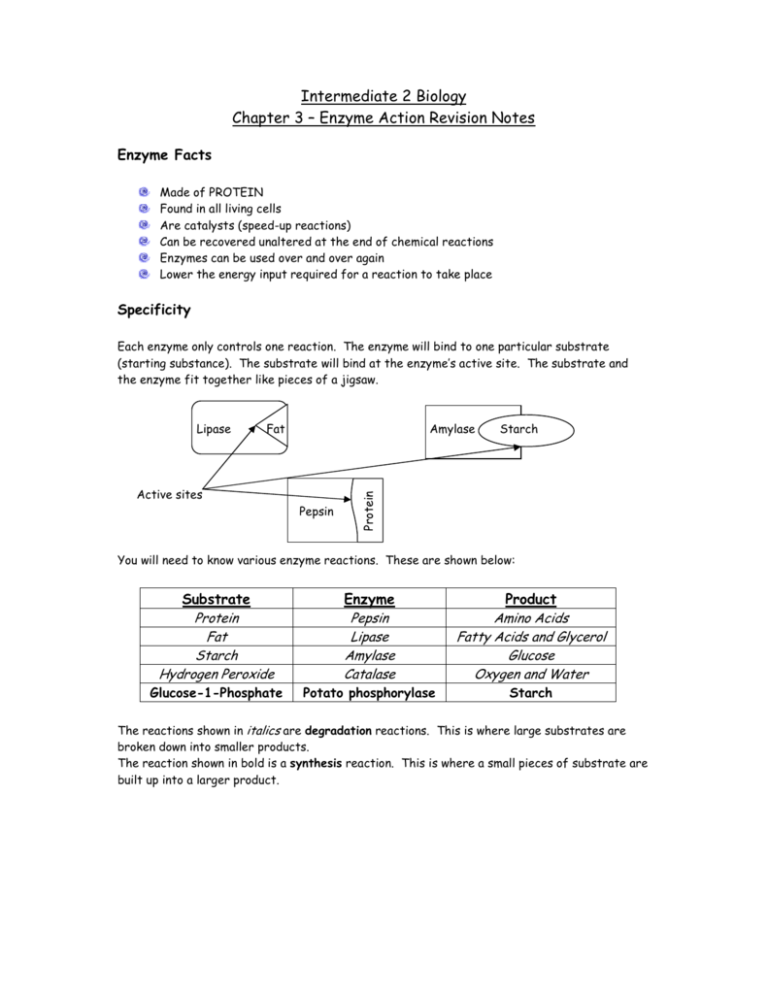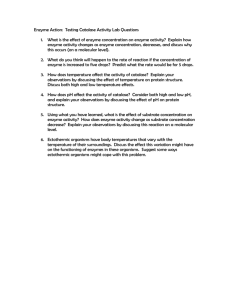Intermediate 2 Biology Chapter 3 – Enzyme Action Revision Notes
advertisement

Intermediate 2 Biology Chapter 3 – Enzyme Action Revision Notes Enzyme Facts Made of PROTEIN Found in all living cells Are catalysts (speed-up reactions) Can be recovered unaltered at the end of chemical reactions Enzymes can be used over and over again Lower the energy input required for a reaction to take place Specificity Each enzyme only controls one reaction. The enzyme will bind to one particular substrate (starting substance). The substrate will bind at the enzyme’s active site. The substrate and the enzyme fit together like pieces of a jigsaw. Fat Amylase Active sites Pepsin Starch Protein Lipase You will need to know various enzyme reactions. These are shown below: Substrate Protein Fat Starch Hydrogen Peroxide Enzyme Pepsin Lipase Amylase Catalase Product Amino Acids Fatty Acids and Glycerol Glucose Oxygen and Water Glucose-1-Phosphate Potato phosphorylase Starch The reactions shown in italics are degradation reactions. This is where large substrates are broken down into smaller products. The reaction shown in bold is a synthesis reaction. This is where a small pieces of substrate are built up into a larger product. Optimum Each enzyme has an optimum temperature – a temperature at which they work best. Enzymes in the human body work best at around 37oC (internal human body temperature). Rate of reaction Optimum temperature Temperature (oC) In addition each enzyme has an optimum pH. Optimum pH Rate of reaction Pepsin 1.5 Amylase 4.7 Phosphorylase 6.5 Catalase 7.0 Lipase 8.0 1 2 3 4 5 pH 6 7 8 9 Denaturation An enzyme will denature when it is exposed to an incorrect pH or high temperature (usually around 50oC). This means that the shape of the enzyme (including the active site) is altered meaning it can no longer bind to its substrate. Enzyme and substrate fit together like pieces of a jigsaw. High temperature/ incorrect pH Enzyme and substrate cannot fit together as the shape of the active site has been altered.





